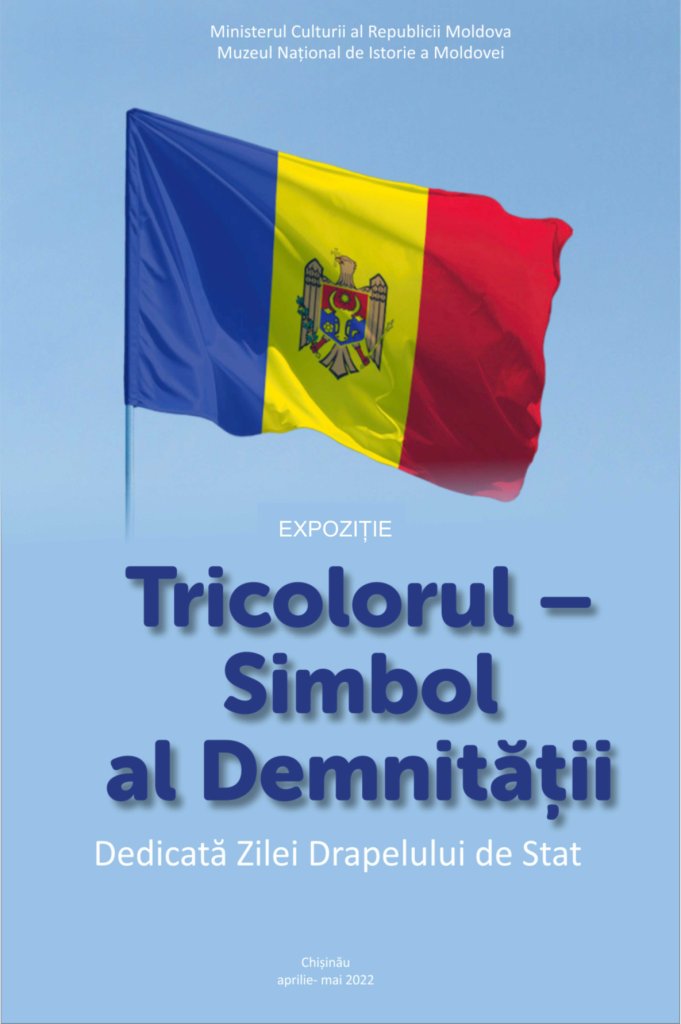 The photo-documentary exhibition "The Tricolor - Symbol of Dignity" is dedicated to the Day of the State Flag, the main symbol of the sovereignty and independence of the Republic of Moldova.
The photo-documentary exhibition "The Tricolor - Symbol of Dignity" is dedicated to the Day of the State Flag, the main symbol of the sovereignty and independence of the Republic of Moldova.
The participants of the Great National Assembly on August 27, 1989 demanded official recognition of the tricolor by a special resolution "On National Symbols", which, in addition to repeating the resolution of the Popular Front of Moldova, contained two articles:
Article 1. Consider the tricolor (blue, yellow, red) with the historical coat of arms of Moldavia on a yellow background as the national flag of the MSSR.
Article 2. Consider it necessary to develop a new coat of arms and a new anthem of the republic in accordance with the historical tradition and the everlasting aspirations of the Moldavian people.
On October 19, 1989, the Commission of the Presidium of the Supreme Soviet of the Moldavian SSR was established to study the state-national symbols of the MSSR. The commission carried out a historical study and duly substantiated the legitimacy of the tricolor in the new Moldavian state. The report of the commission was presented by Alexandru Moșanu at the historic meeting of the Supreme Soviet of the MSSR on April 27, 1990. At this meeting, the Law on Amendments to Article 168 of the Constitution of the Moldavian SSR was adopted. The new edition of the article said: The national flag of the Moldavian SSR - Tricolor - is a rectangular canvas, consisting of three stripes of equal size, arranged vertically in the following sequence of colors from the flagpole: blue (azure), yellow, red. The State Emblem of the Moldavian SSR is printed in the center on the yellow stripe. From this date until November 3, 1990, when the new State Emblem was adopted, the state flag was used without the coat of arms.
On April 23, 2010, the Parliament of the Republic of Moldova voted to declare April 27, the day of the adoption of the Tricolor in the Republic of Moldova in 1990, as the State Flag Day.
On September 17, 2010, a new Law on the State Flag of the Republic of Moldova was adopted, which clarifies the color nuances and detailed proportions of the flag, the way it is raised and handled, and other issues related to it.
The recognition and approval of the national tricolor of the Romanian nation in our country was desired and promoted by large masses of people, led by figures in the field of culture, science and politics, who realized the inevitability of a return to the Tricolor.
The exhibition "The Tricolor - Symbol of Dignity" brings together over 70 museum pieces, especially photographs reflecting epochal events in the recent history of the Republic of Moldova. These are the Great National Assemblies of August 31, 1989 and August 27, 1991, the Flower Bridges, the first celebration of the National Language Day on August 31, 1990, which culminated in the reopening after restoration of the monument of Stephen the Great, the spiritual epicenter of the national renaissance.
The photographs captured the moments of the hoisting of the State Flag on the building of the Moldavian Parliament, on the top of Mount Everest and at the Barcelona Olympics in honor of the victory won by the Olympic champion Tudor Casapu.
Among the most significant exhibits presented at the exhibition are handmade tricolors worn by the participants of the first Grate National Assembly on August 31, 1989, the first postcards and postage stamps with the Coat of Arms and the State Flag of the Republic of Moldova, stamps issued on the occasion of the proclamation of the sovereignty and independence of the Republic of Moldova, the accession of our country to the UN and the OSCE, the signing of the Association Agreement between the Republic of Moldova and the European Union.
A special compartment of the exhibition refers to the functioning of the Law on the State Flag of the Republic of Moldova, to the ways of hoisting the flag. The compartment includes images from various political, military or public events, high-level meetings, images of public institutions, over which, according to the law, in certain cases, the State Flag of the Republic of Moldova flies permanently or temporarily.
The national flag of the Republic of Moldova - Tricolor - symbolizes Romanian origins, belonging to European culture, commitment to the ideals of freedom and democracy.
 31 August 1989 St., 121 A, MD 2012, Chisinau, Republic of Moldova
31 August 1989 St., 121 A, MD 2012, Chisinau, Republic of Moldova
















































